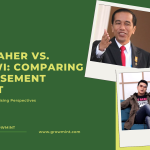
In today’s fast-paced and competitive marketing landscape, businesses are constantly seeking innovative ways to reach their target audience and drive conversions. One approach that has gained traction is the implementation of integrated marketing campaigns. By combining multiple channels such as content, email, display advertising, and social media, integrated campaigns allow brands to deliver a consistent message to a specific audience. The goal? To convert viewers into loyal customers.
But what exactly is an integrated campaign, and why is it crucial for your marketing success? In this comprehensive guide, we’ll delve into the intricacies of integrated marketing campaigns, explore how they can increase your return on investment (ROI), and provide actionable tips to help you design and optimize your own integrated campaign.
Section 1: Understanding Integrated Marketing Campaigns
What is an Integrated Marketing Campaign?
An integrated marketing campaign, also known as an IMC, is a strategic approach that involves coordinating messaging across various marketing channels to deliver a unified and consistent brand experience. Unlike multichannel campaigns, which tailor messaging to specific platforms or audience segments, an integrated campaign ensures a seamless and cohesive story across every touchpoint.
The Benefits of Integrated Marketing Campaigns
Integrated campaigns offer several advantages over single-channel advertising initiatives. Firstly, they allow brands to reach a wider audience by utilizing multiple channels that cater to different preferences and behaviors. By casting a wider net, businesses can increase their chances of connecting with potential customers who may not have been reached through a single advertising channel.
Moreover, integrated campaigns provide a more immersive and engaging brand experience. By leveraging different mediums such as video, social media, and content marketing, brands can create a multi-dimensional narrative that resonates with their target audience. This holistic approach helps to build brand awareness, foster trust, and ultimately drive customer loyalty.
Examples of Successful Integrated Marketing Campaigns
Throughout the years, numerous brands have executed memorable integrated marketing campaigns that have left a lasting impact on consumers. Let’s take a look at a few notable examples:
- Coca-Cola’s “Share a Coke”: This campaign involved replacing the iconic Coca-Cola logo on bottles with popular names, encouraging consumers to share a Coke with their friends and loved ones. The campaign incorporated various channels, including TV, print ads, and social media, resulting in increased brand engagement and sales.
- Old Spice’s “Smell Like a Man, Man”: Old Spice’s humorous and memorable commercials, combined with a strong social media presence, helped the brand reposition itself and appeal to a younger demographic. This integrated campaign successfully rejuvenated the brand and drove sales growth.
- Budweiser’s “Whassup?”: The “Whassup?” campaign became a cultural phenomenon in the early 2000s, featuring a group of friends casually greeting each other with the iconic catchphrase. The campaign spanned TV commercials, online videos, and even a mobile game, cementing Budweiser’s brand identity and boosting consumer engagement.
- The New York Times’ “The Truth Is Hard”: This emotionally-charged campaign showcased the importance of journalism in uncovering the truth. By integrating TV commercials, print ads, and digital content, The New York Times effectively communicated its commitment to delivering reliable news and resonated with audiences worldwide.
Need another case study? Check here.
Section 2: Designing Your Integrated Marketing Campaign
Setting Clear Objectives
Before diving headfirst into your integrated campaign, it’s crucial to define clear and measurable objectives. Ask yourself: What specific goals do you want to achieve? Whether it’s increasing brand awareness, driving website traffic, generating leads, or boosting conversions, clearly outlining your objectives will serve as a guiding compass throughout the campaign planning and execution process.
Identifying Your Target Audience
Understanding your target audience is essential for any marketing campaign, and integrated campaigns are no exception. Take the time to conduct thorough market research and create buyer personas that represent your ideal customers. By gaining insights into their demographics, behaviors, interests, and pain points, you can tailor your messaging and select the most effective channels to reach and engage your audience.
Selecting the Right Channels
Once you have a clear understanding of your target audience, it’s time to select the right channels for your integrated campaign. Consider the preferences and behaviors of your audience when choosing channels such as social media platforms, email marketing, content marketing, display advertising, and more. Remember, the goal is to create a cohesive brand experience across multiple touchpoints, so choose channels that align with your brand’s identity and resonate with your audience.
Crafting Compelling Messaging
Crafting compelling and consistent messaging is at the core of any successful integrated campaign. Your messaging should align with your brand’s values, resonate with your target audience, and clearly communicate the unique value proposition of your product or service. Develop a compelling story that flows seamlessly across all channels, ensuring that each piece of content contributes to the overarching narrative.
Developing a Coordinated Content Strategy
As content plays a pivotal role in integrated campaigns, developing a coordinated content strategy is crucial. Determine the types of content that will best engage your audience, such as blog posts, videos, infographics, or case studies. Create a content calendar that outlines when and where each piece of content will be published, ensuring that it aligns with the overall campaign messaging and objectives.
Implementing a Measurement Plan
An integrated campaign is only as good as its measurement plan. Without proper tracking and analysis, it’s challenging to gauge the success of your campaign and identify areas for improvement. Implement a robust measurement plan that includes key performance indicators (KPIs) relevant to your objectives, such as website traffic, conversions, email open rates, social media engagement, and more. Leverage analytics tools to monitor your campaign’s performance in real-time and make data-driven decisions to optimize your results.
Section 3: Maximizing ROI with Your Integrated Campaign
Continuously Monitor and Optimize
To maximize your return on investment (ROI), it’s essential to continuously monitor and optimize your integrated campaign. Regularly review your performance metrics, identify areas of improvement, and make data-driven adjustments. This iterative process ensures that you are allocating your resources effectively and optimizing your campaign for maximum impact.
Personalize and Segment Your Messaging
Personalization is a powerful tool that can significantly enhance your integrated campaign’s ROI. Leverage customer data to segment your audience and deliver personalized messaging that resonates with specific segments. By tailoring your content and offers to individual preferences and behaviors, you can increase engagement and conversion rates, ultimately driving higher ROI.
Test, Test, and Test Again
Testing different elements of your integrated campaign is key to optimizing your ROI. Conduct A/B tests to compare different versions of your messaging, visuals, calls-to-action, or landing pages to identify the most effective combinations. By analyzing the results of these tests, you can refine your campaign and focus on the elements that generate the highest ROI.
Continuously Improve Customer Experience
A seamless and enjoyable customer experience is vital for driving ROI in an integrated campaign. Ensure that all touchpoints, from your website to social media platforms, provide a user-friendly and consistent experience. Optimize website load times, simplify navigation, and ensure that your messaging aligns across all channels. By prioritizing the customer experience, you can enhance engagement, build brand loyalty, and ultimately drive higher ROI.
Conclusion
Integrated marketing campaigns are a powerful tool for businesses looking to maximize their ROI and connect with their target audience. By strategically coordinating messaging across multiple channels, brands can deliver a cohesive and engaging brand experience that drives conversions and fosters customer loyalty. Remember, success lies in setting clear objectives, understanding your audience, selecting the right channels, crafting compelling messaging, and continuously monitoring and optimizing your campaign. By following these steps and implementing a robust measurement plan, you can unlock the full potential of your integrated campaign and drive exceptional ROI.




